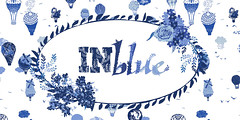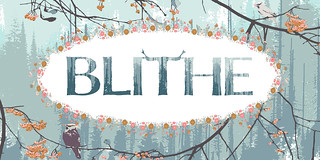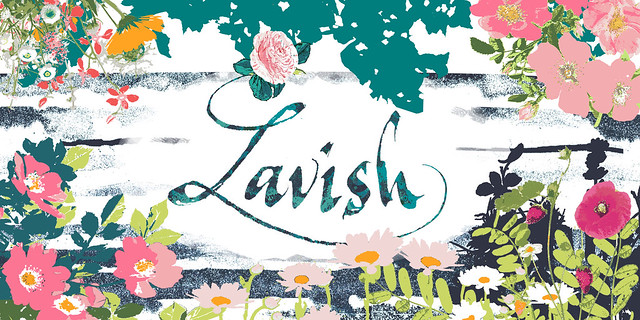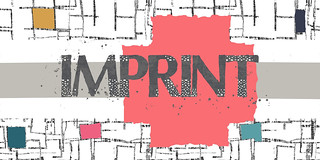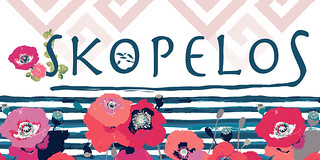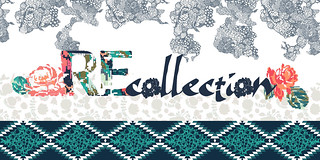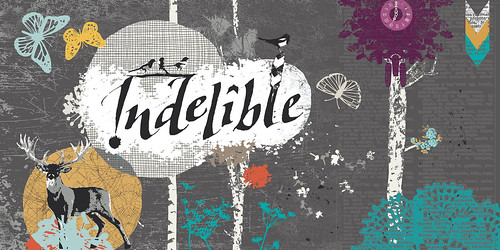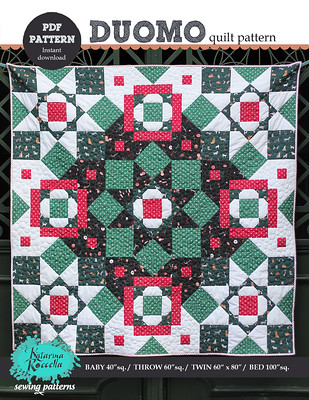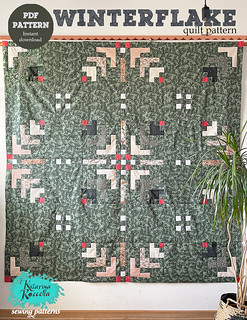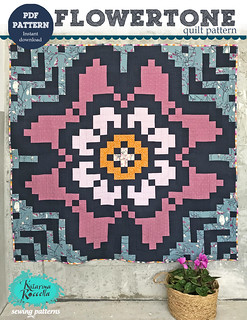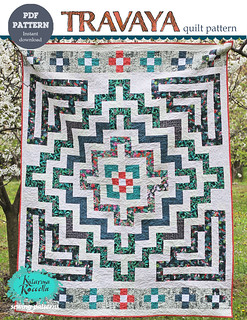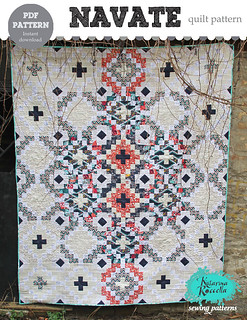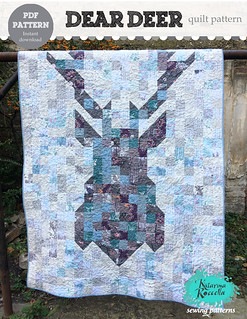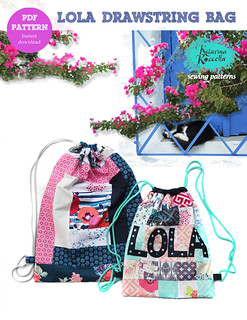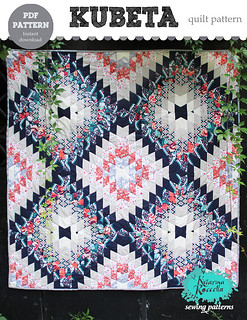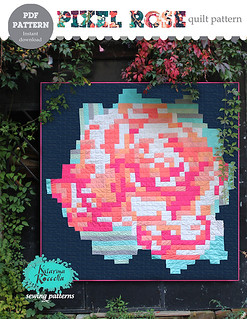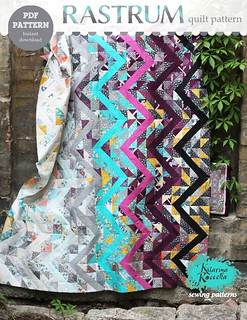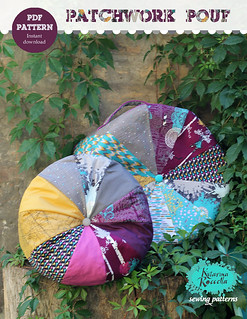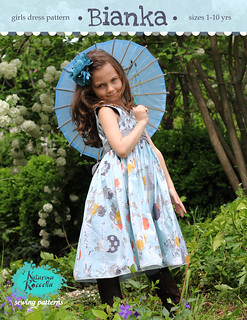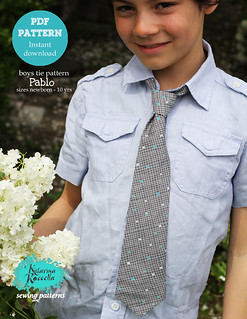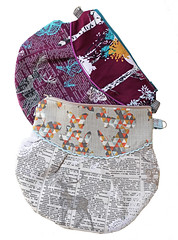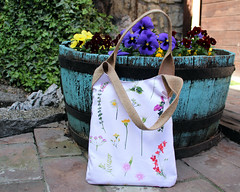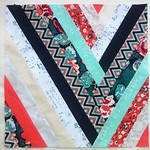- AGF Bundle Up is all about concept sewing and creating based on a theme! Get all the details on the 8 amazing themes offered in AGF Bundle up here!
- AGF Color Master Designer's Palette celebrates AGF designer's signature styles! There are 12 bundles and for more details on this click here!
They are available in a bundle or box version! You can choose from Fat Quarter or Half yards!
Here's mine - Katarina Roccella curated bundle, Edition 1. (excited to know that there will be more editions, yay!!!) Look at all 10 prints it includes:
And while I didn't have time yet to play and think about specific projects that can be made using my bundle, I had a chance to play with one of AGF's themed bundles-called Geometrical.
Here are a few pics I took while playing with these beautiful 10 prints, featuring various AGF designers.
What I really like when thinking about simple patchwork projects is strip piecing and cutting these strip piecing units into colorful strips that can be later pieced in a different way to provide unexpected figures and new shapes That's pretty much how I created my Kubeta block and quilt pattern and here, I used the same technique of cutting the strip piecing unit into 45 degrees cuts of 2" strips. I have combined all the cuts here to create the unique cover for this whimsy laptop bag.
The back is simple and this fun emerald grid fabric was perfect for quick straight line quilting.
I used 2 zippers instead of one to create more colorful opening details and also used a piece of the AGF ribbon that was used to tie up the bundle as the nice side detail, as well.
As I had more fabrics left, I also created my rooted quilt block. You can find detailed instructions for this block as part of the free elemental quilt pattern.
It can be used as pillow front or baby quilt if used as it is.
Hope that you feel inspired to use some of these great bundles and make something amazing, especially with the gift giving season infront us!
Happy sewing,
Katarina
Here's mine - Katarina Roccella curated bundle, Edition 1. (excited to know that there will be more editions, yay!!!) Look at all 10 prints it includes:
And while I didn't have time yet to play and think about specific projects that can be made using my bundle, I had a chance to play with one of AGF's themed bundles-called Geometrical.
Here are a few pics I took while playing with these beautiful 10 prints, featuring various AGF designers.
What I really like when thinking about simple patchwork projects is strip piecing and cutting these strip piecing units into colorful strips that can be later pieced in a different way to provide unexpected figures and new shapes That's pretty much how I created my Kubeta block and quilt pattern and here, I used the same technique of cutting the strip piecing unit into 45 degrees cuts of 2" strips. I have combined all the cuts here to create the unique cover for this whimsy laptop bag.
The back is simple and this fun emerald grid fabric was perfect for quick straight line quilting.
I used 2 zippers instead of one to create more colorful opening details and also used a piece of the AGF ribbon that was used to tie up the bundle as the nice side detail, as well.
As I had more fabrics left, I also created my rooted quilt block. You can find detailed instructions for this block as part of the free elemental quilt pattern.
It can be used as pillow front or baby quilt if used as it is.
Hope that you feel inspired to use some of these great bundles and make something amazing, especially with the gift giving season infront us!
Happy sewing,
Katarina























































































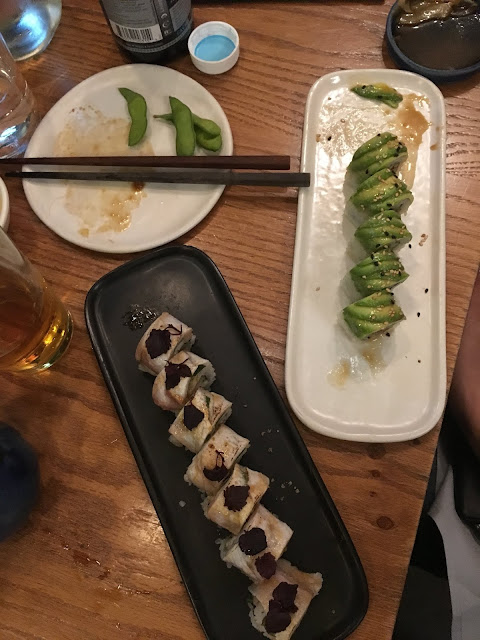
















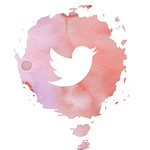

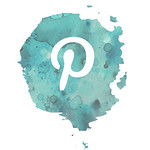
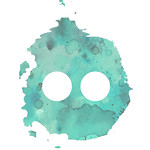

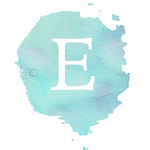



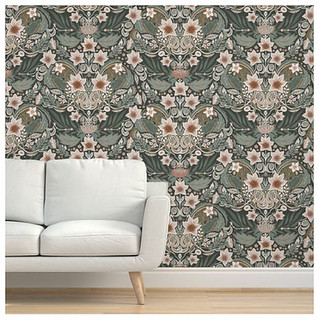







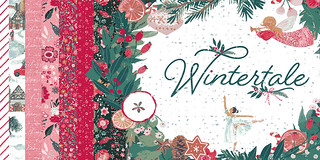
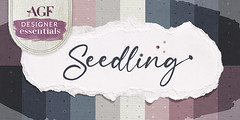
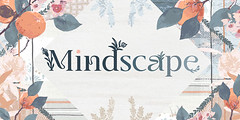

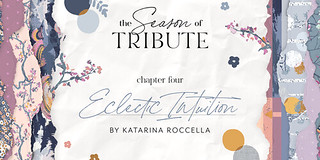
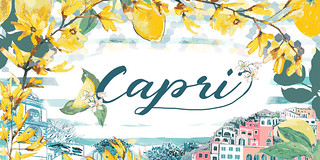
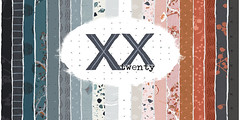


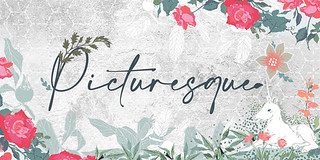


 GRID
GRID
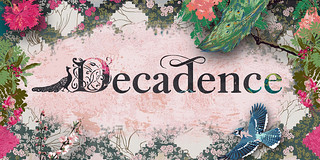 DECADENCE
DECADENCE


